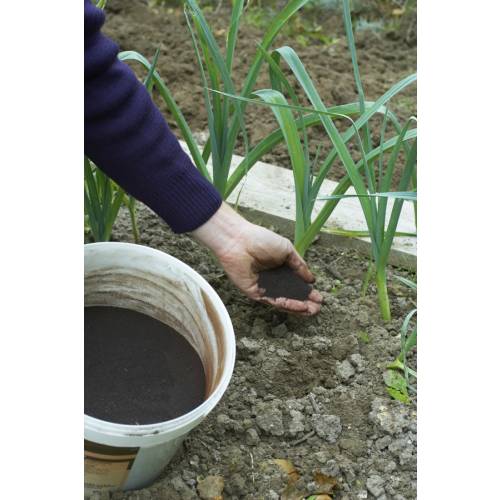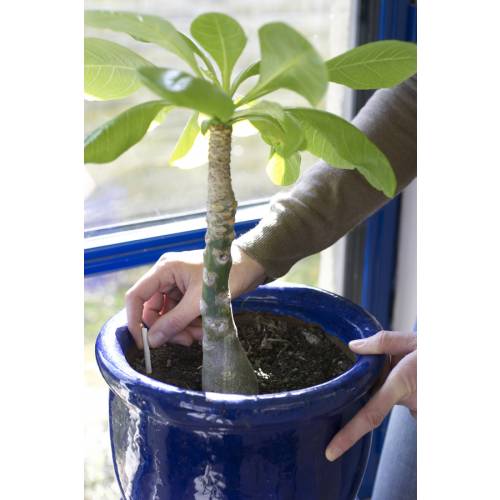
Nourish your plants
Nourish your plants according to their needs
- Details
-
Who eats what? Not all plants have the same needs and fertilizer choices are varied: Learn how to match your plants to the right fertilizer.
Vegetables
Nearly all of them appreciate a rich soil even if some make do with few nutrients. It is better to add basic manure in autumn or winter. The greediest vegetables nevertheless do appreciate a fertilizer during the growing season. Choose a fertilizer rich in potash, to water in around the roots.
Fruit trees
As soon as they are settled in, they do not need fertilizers. At the beginning, give them something to help them to grow, using basic fertilizers (slow release organic fertilizers) such as crushed horn or a delayed acting fertilizer. Beware: giving fertilizer to a thirsty tree is the worst thing: water first!
Ornamental trees
After a few years, they do not need fertilizer. At the beginning, a fertilizer rich in nitrogen with a quick release action, buried at 1.50 m from the trunk, will be beneficial. For example, count 1 spoonful per meter of trunk (5m in height = 5 soupspoons, to distribute in 5 areas at 1.50 m away from the trunk). This is just an indication: follow the dosage indicated on the packaging.
Shrubs
Only give fertilizer to the ones that you expect strong blossoming from or the ones that you prune every year. Give them a basic fertilizer in autumn and winter, or a fast release fertilizer in the spring, rich in nitrogen if their main attraction is the foliage, or rich in potash for the others.
Hedges
If they are small (less than 2 m in height) or pruned very often, treat them like you would shrubs. Treat taller hedges (3 m or more) and un-pruned aligned specimens as you would ornamental trees.
Roses
Ancient varieties and single flower rose bushes do not need much. Modern varieties demand a fertilizer rich in potash and less in nitrogen, at the end of winter. Rose bushes will appreciate a foliar fertilizer at the end of the summer, as well as manure in winter.
Creepers
They can fend for themselves and fertilizer is not necessary, except in poor soil. In that case, fertilize them as you would fertilize vegetables !
Lawns
Lawns with bare patches or yellowing will improve with fast acting fertilizer containing nitrogen. Frequent supplies are better than a strong single dose.
Bulbs
Do not fertilize, you could make them rot or prevent them from flowering.
Indoor plants
Give them a fertilizer rich in nitrogen and potash, two to three times per year, for the greediest (Ficus, Indoor vine). The more frugal (Sansevieria, Clivia) only need it once a year, and never after re-potting. This fertilizer is often sold in sticks to push into the soil.
Pot plants
Never forget to fertilize them if they grow a lot, in particular creepers and roses in pots. Conifers and small shrubs that always keep their leaves (evergreen) have lesser needs. Give them a slow release fertilizer rich in nitrogen (organic fertilizer) or a delayed-acting fertilizer (chemical fertilizer). - Photos (2)


